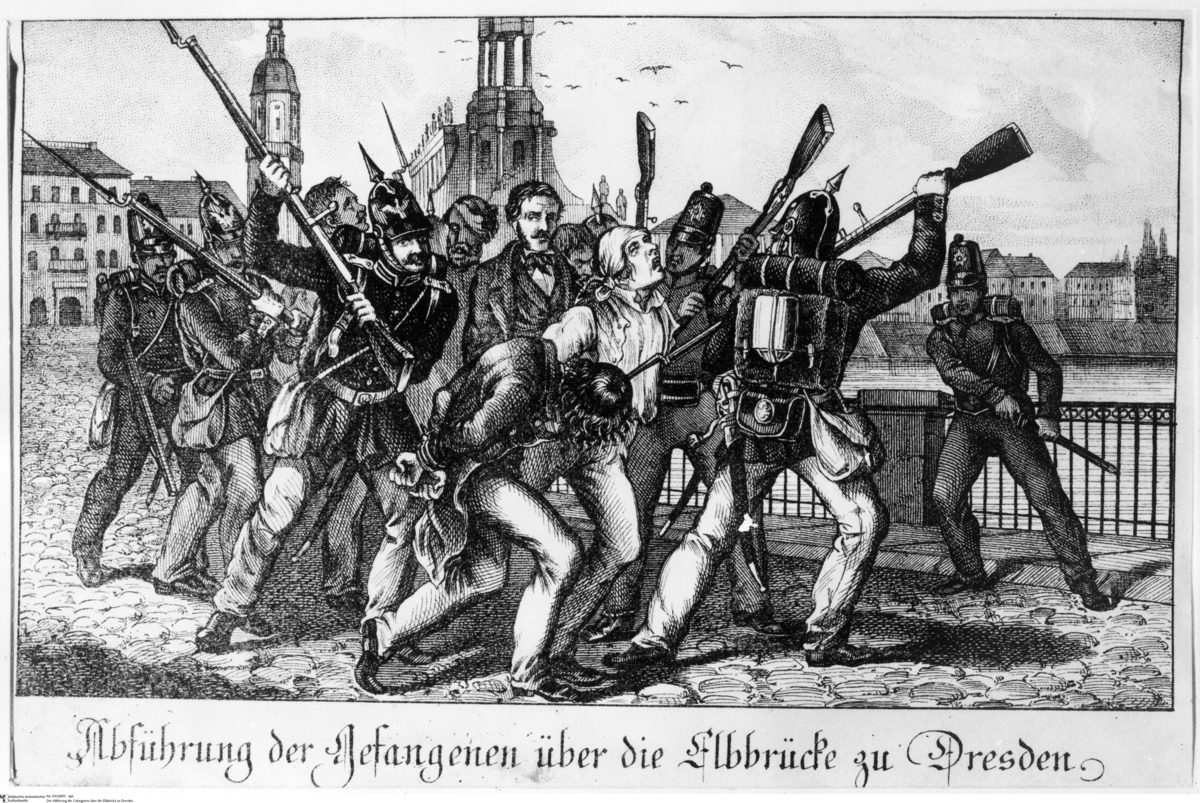Abstract
Popular pressure at the height of the Revolution of 1848–49 had prompted the Prussian monarch, King Friedrich Wilhelm IV (1795–1861), to portray himself as the leading proponent of a unified Germany. But the counterrevolutionary forces regained momentum in late 1848 and early 1849, and on April 28, 1849, he definitively rejected a German constitution and the German imperial crown that the Frankfurt National Assembly had offered to him. As an immediate result, uprisings occurred in several German cities and regions, including the Saxon capital of Dresden. Following a brief revolutionary interlude, which was supported by Saxon court architect Gottfried Semper (1803–1879) and royal director of music Richard Wagner (1813–1883), among others, Prussian forces crushed the insurrection on May 9, 1849. Many revolutionaries were imprisoned or summarily executed. This image depicts Prussian soldiers, recognizable by their spiked helmets, brutalizing a group of prisoners as they take them into custody. Copperplate engraving by unknown artist, 1849.
